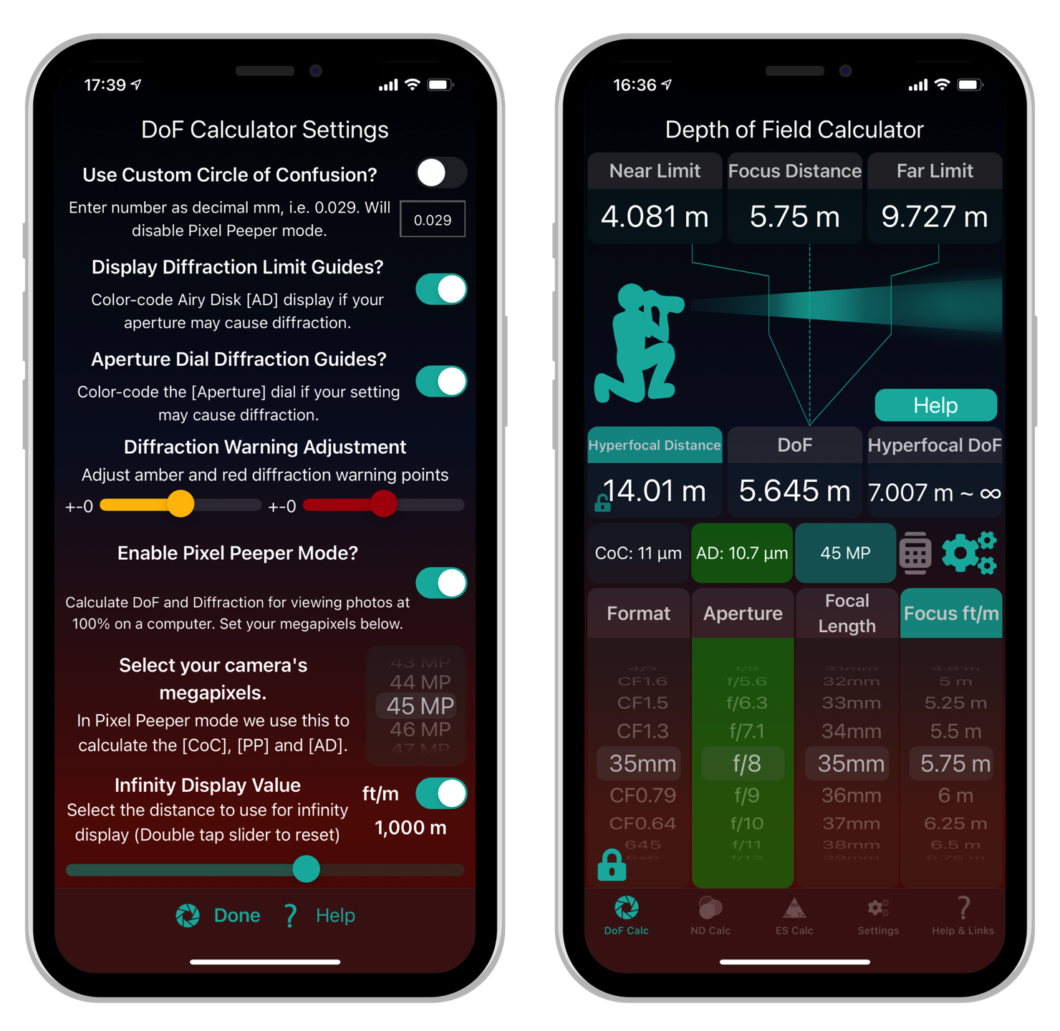

Furthermore, some polymorphs only exist in thin films these polymorphs may not form single crystals readily. Unfortunately, growing a suitably large and perfect sample can be technically challenging. Single-crystal diffraction is the most precise and direct way to determine an unknown crystal structure. Yet, determining the structure of these organic semiconductor thin films – of which the crystal structure is one of the most important aspects – remains challenging.
Diffraction limit calculator full#
Thus, understanding the processing–structure–function relationships of these compounds, and ultimately learning to control their thin-film morphology, is critical for realizing the full potential of these emerging technologies (Chen et al., 2012 ▶ Li et al., 2012 ▶).

Finally, given that these thin films are often only several hundred nanometres thick, molecule–substrate interactions can also often dominate structure development, leading to preferentially edge- or face-on molecular orientations that can also have profound effects on device performance. For example, the self-organization of donor and acceptor materials in bulk heterojunction (BHJ) active layers of OPVs is extremely complex, and optimizing the blend morphology can lead to higher solar cell efficiencies (Müller-Buschbaum, 2014 ▶). The way in which these organic semiconductors crystallize can vary based on their chemical functionalization, the pre- and post-deposition processing steps, and the influence of any additional constituents that are present in blends (Hiszpanski & Loo, 2014 ▶). Because charge carriers selectively transport through the π–π orbital overlap of neighboring molecules, the manner in which organic semiconductor molecules are packed and oriented within thin films has been shown to critically impact device performance (Lee & Loo, 2010 ▶). In addition to the chemical structure, the morphology of organic semiconductor thin films is known to strongly influence electrical performance. The potential of these emerging technologies has spurred research to develop new electrically active materials that demonstrate improved electronic properties. In particular, OPVs have attracted significant interest for their promising ability to harness solar energy (Müller-Buschbaum, 2014 ▶).

Owing to their light weight, low cost and amenability to facile processing methods, organic semiconductors are opening the door to new technologies, such as organic photovoltaics (OPVs), thin-film transistors (TFTs) and flexible electronic devices (Loo et al., 2007 ▶). Examples that demonstrate the utility of this program include determining the lattice parameters of a polymorph of a fluorinated contorted hexabenzocoronene in a blind test and refining the lattice parameters of the thin-film phase of 5,11-bis(triethylsilylethynyl)anthradithiophene with the unit-cell dimensions of its bulk crystal structure being the initial inputs.
Diffraction limit calculator manual#
By selecting manual or automatic modes of operation, the user can either visually match the positions of the experimental and calculated reflections by individually tuning the unit-cell parameters or have the program perform this process for them. The input data requirements are minimal and easy to assemble from data sets collected with any position-sensitive detector, and the user is required to make as few initial assumptions about the crystal structure as possible. The DPC toolkit is a simple-to-use computational tool that helps users identify the unit-cell lattice parameters of a crystal structure that are consistent with a set of two-dimensional grazing-incidence wide-angle X-ray scattering data.


 0 kommentar(er)
0 kommentar(er)
